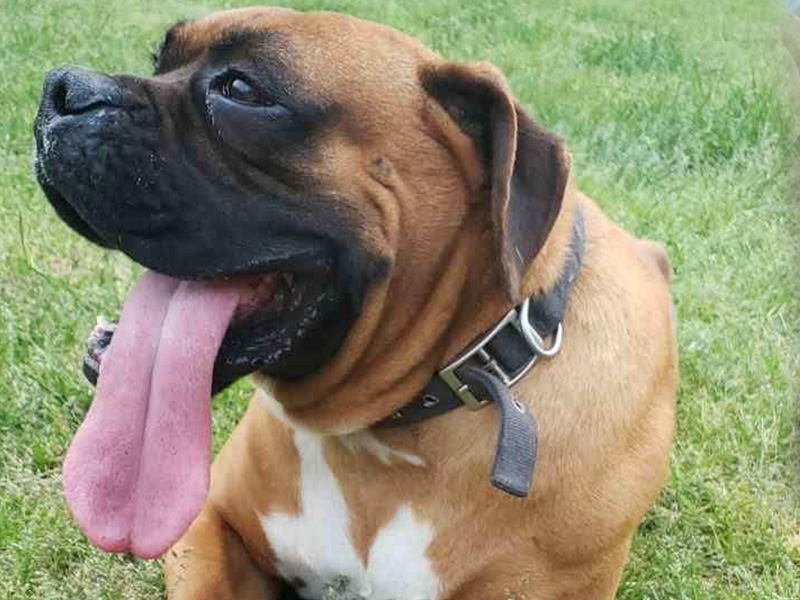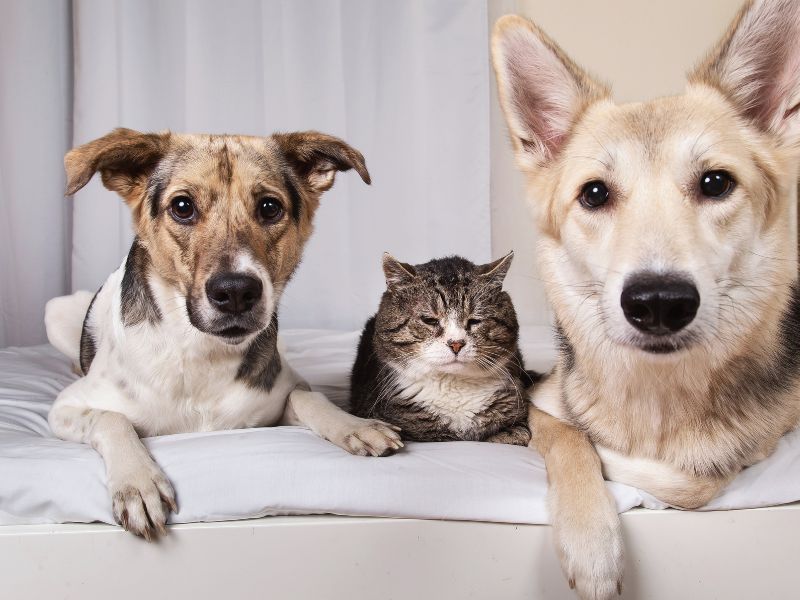Pet Knee Repair
At Helping Hands Veterinary Surgery & Dentistry of Virginia, we specialize in affordable knee procedures to address various orthopedic issues.

Cruciate Ligament Repair (CCL/ACL)
Cruciate ligament injuries are common in pets and can lead to pain, instability, and decreased mobility. Our experienced team performs cruciate ligament repair procedures to address the issue and restore stability to your pet’s knee joint. Read more in our Frequently Asked Questions section below!
Services and Benefits
- Compassionate and experienced staff dedicated to your pet’s well-being
- Affordable pricing options to accommodate pet owners’ budgets
- Personalized post-operative care and support
We offer the Lateral Suture Technique. We do not perform CCL/ACL repair on pets weighing more than 85 lbs. Contact us today to learn more about our affordable knee procedures and how we can assist you and your furry companion.

–
Cruciate Ligament (CCL/ACL) FAQ’s
What and Where is the Cranial Cruciate Ligament In Pets?
The cranial cruciate ligament (CCL), also known as the anterior cruciate ligament (ACL) in humans, is found in the knee, which is called the stifle in pets. When this ligament is torn, instability or excessive movement of the joint causes pain, inflammation, and arthritis over time.
What Causes A Cranial Cruciate Ligament Injury In A Dog?
Cruciate ligament tears in a dog’s knee are quite common. In some cases, dogs can tear the ligament by exerting too much pressure or strain on the ligament while engaging in high-impact exercises, like chasing a tennis ball. More often, the ligament becomes weaker over time with age and eventually breaks without any significant trauma or activity. In some cases, the cartilage within the knee, known as the meniscus, is also torn.
When a partial or complete tear of the cruciate ligament occurs, the knee becomes unstable. This instability can be detected during a physical exam. This abnormal motion in the joint is called “cranial drawer motion” as it mimics the appearance of a drawer opening. In some cases, your pet may need to be sedated in order for the doctor to safely detect the cranial drawer in a stifle.
What Types Of Surgeries Are Available To Repair My Dog’s Cranial Cruciate Ligament?
There are several surgical options to stabilize a dog’s knee after they have been diagnosed with a torn cruciate ligament. The most commonly performed surgeries are Tibial Leveling Osteotomy (TPLO), Tibial Tuberosity Advancement (TTA), and Extracapsular Lateral Suture Stabilization, sometimes referred to as tight rope or lateral suture surgery.
The TPLO and TTA surgeries are performed by cutting into the tibia, the bone that forms the bottom of the knee joint, and placing a metal implant that changes the conformation of the joint in order to prevent the excessive movement that is causing pain. This surgery is most commonly performed by board-certified orthopedic surgeons and is the preferred option for large and athletic dogs.
Which Cranial Cruciate Ligament Surgery Is Performed At Helping Hands Vet?
Here at Helping Hands, we offer the Lateral Suture technique, where a strong monofilament (suture) is placed around the outside of the joint to mimic the function of the dog’s natural cruciate ligament. This surgery is a great option for small or older and less active dogs as it is less invasive and quicker to perform. The lateral suture technique is also a good option when the TPLO or TTA procedure is not financially feasible for large dogs, as it is typically much less expensive.
What Else Do I Need To Know Before My Dog’s Cranial Cruciate Ligament Surgery?
Prior to surgery, pre-anesthetic bloodwork and X-rays of your pet’s hips and knees are required. The blood work helps us screen for health concerns that could increase your pet’s risk of undergoing anesthesia and helps us tailor the best anesthetic plan for each patient. It is always recommended that you discuss surgery and sedation with your primary veterinarian who has followed your pet’s health if you have any concerns. It is important to remember there is always a risk when sedating any animal.
X-rays will need to be taken to determine if there is evidence of any other orthopedic abnormalities that could complicate surgery or prevent your pet from regaining the mobility and stability of that limb. While X-rays can further support the suspicion of a cruciate and or meniscus tear, they cannot definitively diagnose them. In order to be 100% sure these structures are damaged, advanced imaging such as MRI or arthroscopy (placement of a small camera in the joint) is needed. Due to the cost and need for patients to be under anesthesia for these diagnostics, in most cases the diagnosis of meniscal and cruciate tears is made by examining the joint while under anesthesia to perform the surgery to stabilize the knee.
How Can I Ensure The Best Recovery For My Dog Following Cranial Cruciate Ligament Surgery?
The best way to help your pet recover is to strictly adhere to postoperative rest and recovery protocols. Crate rest, where your pet must stay in the crate (other than to go to the bathroom while on a leash), is required for the first two weeks of recovery. Once the skin incision has healed and the knee has been re-evaluated by a veterinarian, a very controlled and gradual return to exercise can begin. We will provide general guidelines after surgery; however, it is highly recommended to consult with a veterinary physical therapist for a specific protocol for your pet to be implemented and supervised. We will also provide you with a list of physical therapists. Failure to properly restrict your pet’s activity during the rehabilitation process significantly increases the chance your pet will need additional treatments or surgery.
We are an outpatient facility, which means your pet will go home the same day they are treated. While most patients do well after surgery, it is always ideal for them to be transferred to a separate overnight facility for monitoring and continued pain management when financially feasible.
The only additional fees you may incur at Helping Hands Veterinary would be for our Pre-Surgical Exam, Bloodwork, Biopsies, E-collars, or certain medications not included in the surgery cost.
If a pet can tear the ligament they were born with, they can always damage or tear the implant used in the lateral suture surgery. No surgery is without risk. Please give us a call at 804-355-3500 to discuss any questions you may have!
Veterinary Surgery & Dentistry Services
in Richmond, VA
Pet Amputation
Pet Dental Procedures
Pet C-Section
Pet Dewclaw
Pet Exploratory & Foreign Body Removal
Pet Eye Procedures
Pet Growth & Mass Removal
Pet Hernia Repair
Pet Knee Repair
Pet Organ Removal
Pet Spay & Neuter
Pet Stomach
Pet Urinary
Pet Wound & Laceration Repair
Knee Repair
We do not perform CCL/ACL repair on pets weighing more than 85 lbs.
(CCL/ACL)
Pet Surgery Additional Fees
(if deemed appropriate)
(90+ lbs)
